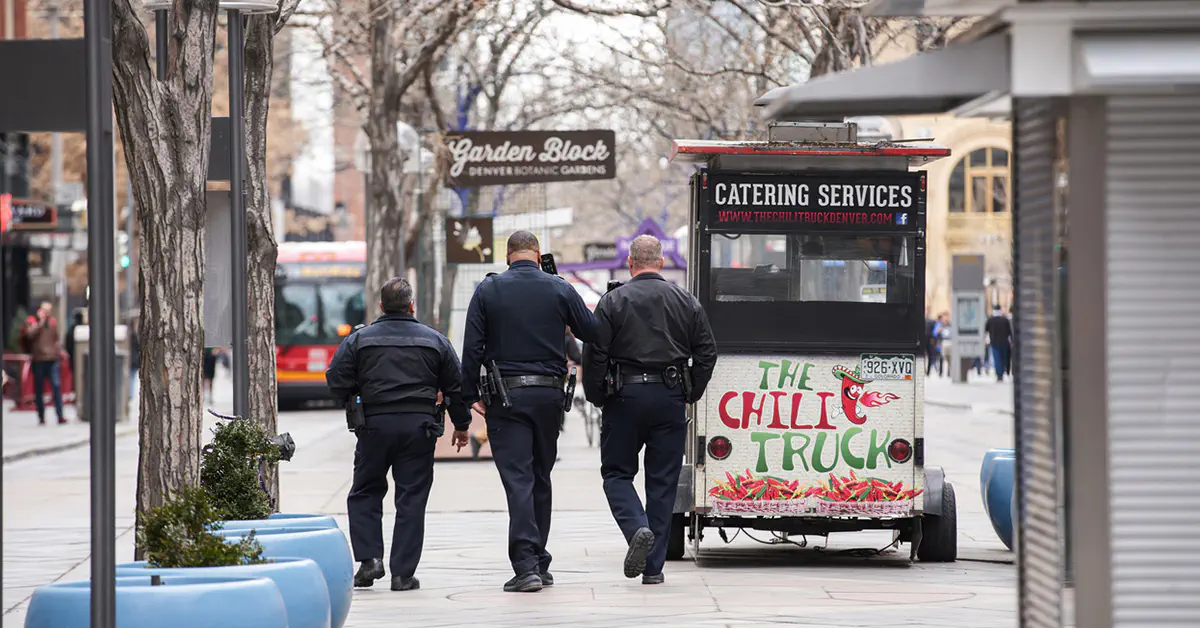Colorado Drug Addiction and Drug Rehab

The beauty of the State of Colorado does not prevent it from struggling with the same drug abuse and addiction problems belonging to the other states of the Union. Colorado has more than 500 drug rehab programs available to residents in the state. Most of them are located toward the center of the state or following the Interstate 25 corridor. This could make it difficult for someone in the more remote or mountainous sections of the state to find help when it is needed.
The majority of these programs offer outpatient drug rehab services, which means a person lives on their own and visits the rehab program regularly. Some of these outpatient programs offer intensive programs that require a person to spend several hours a day at the facility. This type of program would be more economical than an inpatient program which provides for the room and board of a person in recovery.
Not everyone has the strength of will to succeed in an outpatient program. An inpatient program provides a greater or lesser degree of around-the-clock supervision. Many people need the additional discipline and supervision of inpatient rehab to successfully leave the addicted lifestyle behind.
About thirty of these Colorado drug rehab programs focus on opioid addiction specifically. Most of them offer a variety of medication-assisted treatment choices but a few simply offer methadone.
Drug Abuse in Colorado
Among the citizens of this state, more than 19% are current drug users. Only five states and the District of Columbia have higher numbers.
More than one in four people in Colorado have used marijuana in the last year. Among those aged 18 to 25, it’s almost every second person.1
Colorado also has a high rate of drug addiction, with nearly 9% of the population aged 12 and older struggling with this problem. Only the District of Columbia and Oregon have a greater problem.
More than 12% of the population suffers from an alcohol use disorder. Only the District of Columbia and Washington State have a more extensive problem.
With these high numbers, addicted Coloradans need access to effective drug rehab that can put them on the path to sobriety at last.
Substances Being Abused in Colorado

As Colorado was the first state (along with Washington) to legalize the recreational use of marijuana, it is not surprising that this is the most commonly abused addictive drug. However, nearly 39% of Coloradans engage in binge drinking each month, one of the highest numbers in the nation. Only seven states have higher rates of binge drinking.1
Colorado does not have particularly high rates of prescription drug abuse, heroin use or methamphetamine use. Surprisingly, Colorado has the second-highest rate of cocaine use in the country.
Involuntary Treatment
In Colorado, if a person is considered to be a danger to themselves or the community because of their drug or alcohol use, they can be involuntarily sent to a drug rehab facility by court order. This court order would give rehab staff five days to try to convince the addicted person to voluntarily enter a drug treatment program. If that person agrees, they can be released from a mandatory order so they can enter a voluntary program.
This action may not be taken simply because a person is using drugs but only if they are incapacitated to the point of being unable to take care of themselves or if they are dangerous to others.2
The Pandemic and Fentanyl Increase Colorado’s Losses from Drugs
In terms of drug overdose deaths, the restrictions surrounding the 2020 pandemic hit Colorado hard. For the six years leading up to 2020, overdoses losses were level, numbering just slightly over or under 1,000 each year. That began to change in March 2020 as pandemic restrictions went into effect across the country.3
From March 2020 to January 2022 (the latest date for which statistics are available), the number of losses due to drug overdoses climbed steadily, as you can see here:
- For the twelve-month period ending in March 2020, there were 1,174 deaths.
- By January 2022, there had been 1,933 deaths in the prior twelve-month period, an increase of 171%.
A report from the Colorado Health Institute noted that two out of three of the 2020 overdose deaths resulted from opioids, with the majority of opioid deaths coming from illicitly manufactured fentanyl. Opioid deaths skyrocketed between 2019 and 2020.

As recently as the first few months of 2019, most fentanyl supplies were restricted to the Eastern U.S. Then that pattern began to change. Reports of fentanyl overdose deaths in the Western U.S. began to surface in late 2019.4
Combining the isolation and reduced rehab resources resulting from the pandemic and the increasing fentanyl supplies in the West and you have Colorado’s dire situation of overdose deaths that are now close to doubling in just a few years.
Looking at the Rate of Overdose Losses
Taking a longer view of these statistics, it’s possible to see just how savagely Colorado is being affected by drug overdoses. Overdose deaths are often measured by the rate of loss per 100,000 people to take population increases into account. In 2000, the rate of loss to overdose deaths was 7.8 deaths per 100,000 people. By 2020, the rate of loss was 24.8—an incredible increase of 318%.5
Stated another way, more than three times as many people were lost to drug overdoses in 2020 as in 2000. The biggest jump was from 2019 to 2020 when there was a 158% increase in a single year.
The Path to Recovery

For a person to fully leave addiction behind and start living a stable, sober life again, they must receive drug rehab help that enables them to leave the pain, guilt and loss of addiction behind. They must gain the life skills that enable them to face situations in life without needing drugs to get through any difficulties. Anyone who has been through this process knows that it is not an easy task, but with the right support, counseling and life skills training, it can be achieved.
When a person can truly rely on themselves to walk a sober path through life, they can leave a reliance on drugs or alcohol far and the destructive lifestyle that goes with it far in the past.
Sources:
-
SAMHSA. “2019-2020 National Survey on Drug Use and Health: Model-Based Prevalence Estimates.” Substance Abuse and Mental Health Services Administration, 2021. SAMHSA Publication ↩︎ ↩︎
-
BHA. “Substance Use Commitment.” Behavioral Health Administration, undated. BHA. ↩︎
-
CDC. “Provisional Drug Overdose Death Counts.” Centers for Disease Control and Prevention, 2022. CDC. ↩︎
-
NIH. “Steep increases in fentanyl-related mortality west of the Mississippi River: Recent evidence from county and state surveillance.” National Institutes of Health, 2020. NIH. ↩︎
-
CHI. “A Parallel Epidemic: More Overdose Deaths in 2020, Fentanyl Fatalities Spike.” Colorado Health Institute, 2022. CHI. ↩︎
